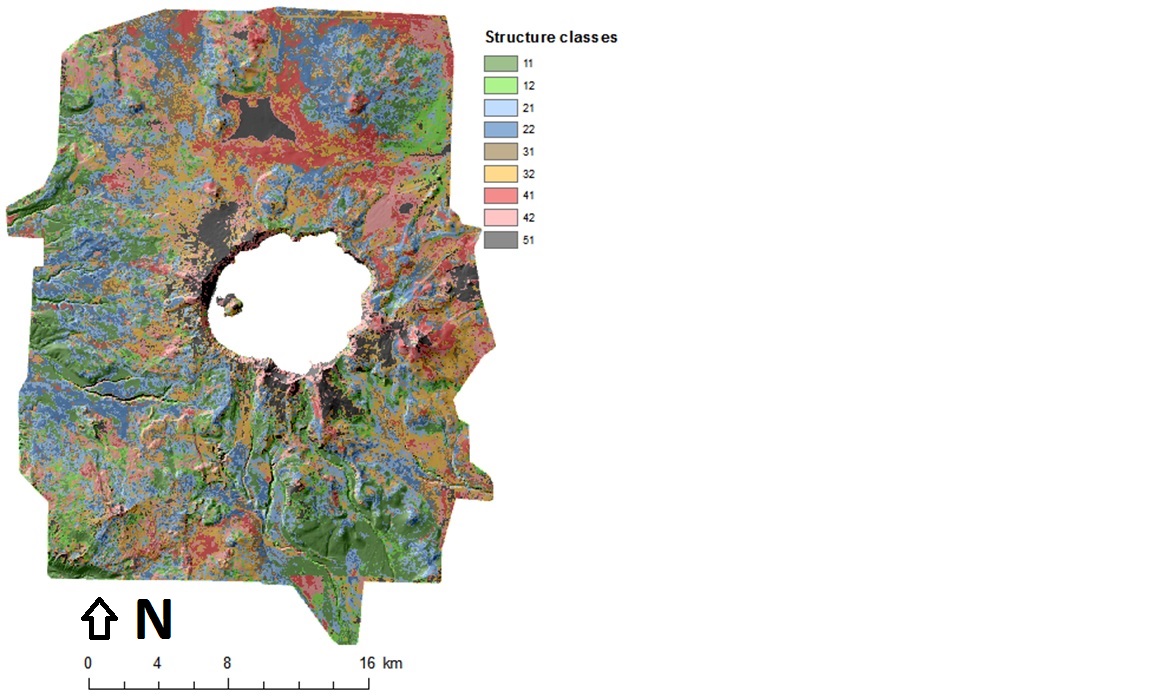In 2010, a team of researchers at the University of Washington worked with the NPS to analyze the canopy structure across Crater Lake National Park using lidar data. The data were used to identify individual trees and the results were classified into openings (no canopy cover greater than 2 m) and clumps of trees in the height ranges of 2–8, 8–16, 16–32, and greater than 32 m. These strata were further used to identify and map canopy structural classes across the park, and the distribution of these classes compared with patterns of climate and topography.
The results show that stands are most complex in terms of the number of openings, tree clumps, and tree cluster peaks when the area in openings is approximately 20–40%. Stands were least complex when openings were less than 10% or greater than 50% of the area. None of the structure classes were uniquely associated with any particular forest zone. Conversely, all forest zones had mixtures of structure classes, with one to three structure classes typically dominant. The lower and more mesic zones (mesic low, mesic mid, and Sierra Mixed) were dominated by the tall structure classes (11, 12 in the figure) with significant proportions of their area in the mid-height class (21).
Forest zones that represent harsher climate extremes (subalpine, lodgepole pine, ponderosa pine, and East Cascades Mixed) were dominated by mixtures of the mid to shorter height and more open structure classes (31, 32, 41, 42, 51 in the figure). Only the mesic high forest zone included substantial area across a wide range of structure classes, which may represent its large area that includes a wider range of ecotones than the other forest zones. Monitoring these stands allows for a better understanding of how climate impacts forest community structure at Crater Lake.

Forest structure classes at Crater Lake National Park.

